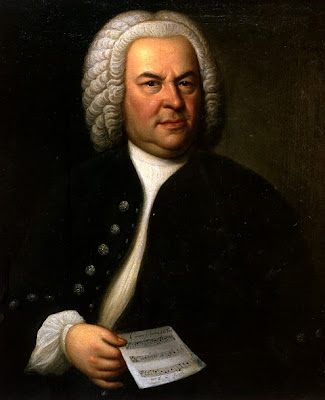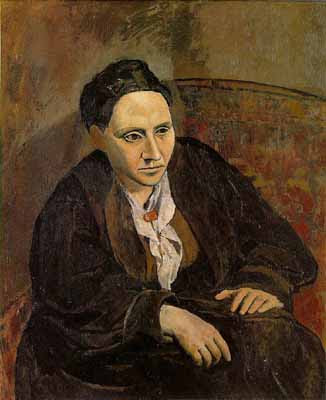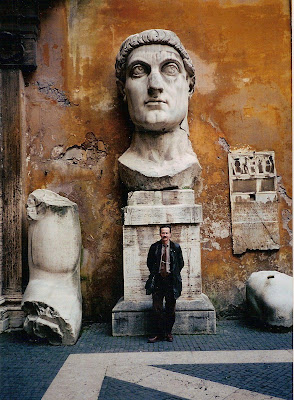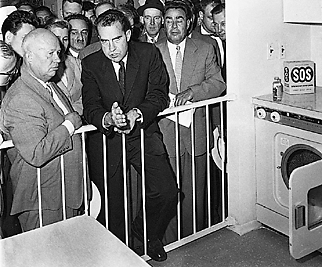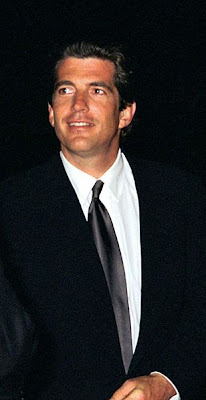
Image:sustainblecommunitysolutions.com
Below is a three-year old Op-Ed piece from the New York Times. I have to share it because it explains again one of my pet peeves: the fact that President Carter never used the word "malaise" in his famous July 15, 1979 speech. That was a characterization by others. But someone else might have interpreted it as "realistic." Remember that one of the first things President Reagan did in office was to remove the solar panels from the White House. What an example for energy conservation! Think how much further along we would be in developing alternate fuels if Carter had been reelected in 1980. I contend that he has received a bum rap on many issues. (Refer to my post on October 2, 2008 for an account of the October Surprise - posted again below Gordon Stewart's piece.)
July 15, 2009
Op-Ed Contributor
Carter’s Speech Therapy
By GORDON STEWART
In the summer of 1979, as millions of Americans idled in creeping gas lines, President Jimmy Carter was preoccupied with matters abroad: first he was in Vienna completing SALT II with Leonid Brezhnev, next pleading for it before Congress, then away in Japan and Korea, hoping to rest in Hawaii afterward.
Instead, a White House reeling from approval numbers lower than Nixon’s urged Mr. Carter to get back home fast and do something. In other words, make a speech that would silence the mobs and revive his presidency. The networks cleared their schedules for July 5, 1979.
We speechwriters hacked together a draft of what was to be the president’s fifth speech on the energy crisis since taking office, and sent it to Camp David, along with word that we didn’t much like it. No one there liked it either, and on the morning of July 5, The Times blared, “President Cancels Address on Energy; No Reason Offered.”
When the White House press secretary, Jody Powell, eventually said the president was listening and thinking and writing, it wasn’t spin. Some 130 V.I.P.’s from Gov. Bill Clinton to Walter Cronkite were shuttled in and out of Camp David to offer their advice on what he should tell the nation. The great and wise talked and talked, and the president took careful notes. For 10 days a country already speechless with rage had a leader who said nothing.
Some of the notables spoke in apocalyptic terms. Others seemed to be stocking up on even more than stories, as stewards feared they could run out of glasses inscribed with “Camp David,” while helicopter crews were far too polite to comment on the clanking jackets of departing dignitaries. Actually, Camp David is a wonderful place when you’re not trying to write your way out of it.
Meanwhile, mostly secluded in a cabin, sometimes working day and night shifts, my colleague Hendrik Hertzberg and I wrote and rewrote what we had no idea would still be known 30 years later as “The Malaise Speech.” Looking out the window of the lodge where we went to eat and avoid nervous glances, I saw Clark Clifford glide by on a bicycle and wondered how such powerful people managed to keep their hair looking so lordly. Later I learned he had fallen off. I worried it might be a metaphor for our unfinished speech.
We were hardly the only ones worrying. The pollster Patrick Caddell filled volumes of memos and hours of conversation with his views: that after Vietnam and Watergate Americans had become inward-looking, obsessed with consumption, fragmented, incapable of collective action and suffering a “crisis of confidence.” It was clear from what the president was writing himself that he wanted these ideas to be at the center of his speech. And they are.
Vice President Walter Mondale and the president’s domestic policy adviser, Stuart E. Eizenstat, were troubled by so much ruminating on the American condition; they were certain that Americans were less concerned with philosophical emptiness than empty gas tanks.
Between visits with staff, memos and, most important, the president’s own drafts, there were plenty of fine minds to work with. But the point of the speech, its overall direction, and how it would deal with Americans’ energy realities remained in deep, often bitter dispute. Eventually, we had to insist that all the principals gather around a very long table until they reached agreement.
Things did not go well, and we writers did not help. Seated at the far end of the table, we goaded both sides, implying that the confidence stuff was too airy and the energy programs too boring.
The two camps engaged in pitched battle and then, amazingly, found agreement: the idea emerged that while America’s afflictions were real, they could not be treated as abstract disorders. I recall scribbling faster than it seemed possible to put legible words on a pad, but the end result was: “On the battlefield of energy we can win for our nation a new confidence, and we can seize control again of our common destiny.” The speech had found its central argument. The policy steps fell into place.
On July 15 — 30 years ago today — at 10 p.m., President Carter and 100 million people finally faced each other across that familiar Oval Office desk. What they saw and heard was unlike any moment they had experienced from their 39th president. Speaking with rare force, with inflections flowing from meanings he felt deeply, Jimmy Carter called for the “most massive peacetime commitment” in our history to develop alternative fuels.
Contrary to later spin, the speech was extremely popular. The White House was flooded with positive calls. Viewers polled while watching found that the speech inspired them as it unfolded.
To this day, I don’t entirely know why the speech came to be derided for a word that was in the air, but never once appeared in the text. Still, the “malaise” label stuck: maybe because President Carter’s cabinet shake-up a few days later wasted the political energy that had been focused on our energy problems; maybe because the administration’s opponents attached it to the speech relentlessly; maybe because it was just too hard to compete with Ronald Reagan and his banner of limitless American consumption.
The real reason is probably that there was never any way the Jimmy Carter we all know would avoid saying: “There is simply no way to avoid sacrifice.” Where the speeches of Reagan and Barack Obama evoke the beauty of dreams, President Carter insisted on the realities of responsibility and the need for radical change. Mr. Carter’s sense of our own accountability, his warnings about the debilitating effects of self-centered divisiveness were the speech’s true heresies. They are also the very elements that keep it relevant today.
Gordon Stewart was the deputy chief speechwriter for Jimmy Carter from 1978 to 1981.
I remember waiting for a bus with my friend Gary Evans Murakami at Van Ness by the Jack Tar Hotel, when word came down that President Carter had made an early concession on election night 1980. I was angry about that—first, that he had been defeated*—but second, that he had conceded before the polls had closed on the West Coast. I felt that his action would almost certainly impact some of the House and Senate seats.
I won’t include it here, but I wrote a five thousand word letter to professor Gary Sick in 1991 about the October Surprise in the 1980 presidential campaign. I know that it’s been discounted by the press, and it’s dropped off the radar screen of general interest; but I’m convinced that there was—and still is—a significant story.
The issue was not Vice Presidential candidate Bush’s going to Paris. That was a straw man—easily demolished—and effective in shutting down the investigative reporting.
What actually happened – and it has to be true, because it was stipulated by all the participants— was a meeting in Washington D.C. at the L’Enfant Plaza Hotel, on October 2, 1980 with Richard Allen, Laurence Silberman and Robert McFarlane. Somebody claiming to represent the Iranian government offered to free the hostages to a President Reagan if the new government would sell arms to Iran to assist them in their war with Iraq. This meeting was never reported to the Secretary of State, though Silberman, as a former ambassador, knew that the law required him to do so. He later asserted the offer had not been credible.
Laurence Silberman is now a senior judge on the U.S. Court of Appeals for the District of Columbia Circuit. His was the deciding vote which overturned the conviction of Oliver North for his illegal activities in the Iran-Contra affair (which incidentally did not divert the largest amount of money to the Contras from the sale of arms to Iran, but instead set up secret Swiss bank accounts, whose purpose was to fund a permanent secret plumbers unit without Congressional oversight-- still an unaccounted-for fund).
The person who claimed to represent the government of Iran made offers that were eventually kept— and the hostages were released the actual minute Reagan was sworn in as President on January 20, 1981— 76 days after the election. Former Iranian President Beni Sadr claimed that the Reagan election campaign didn't want the hostages released until Reagan was sworn in, so that Carter would be denied any credit for their release. So were they held another 76 days just for spite? (During the last primary season, Rudy Guiliani cited the Iran hostages’ release on Inauguration Day as a prime example of Reagan’s influence and greatness.)
They were offered a deal— the terms of which were honored by both sides. Yet they claimed they had not accepted the deal. Is that credible? You decide.
It parallels what happened in 1968. And some of the same people were involved. The Paris Peace Conference was boycotted by President Thieu at the request of Madame Chenault, (wife of General Chenault of the "Flying Tigers") who stated on A&E's "Secret Biography of Richard Nixon" aired 2/19/91, that she did so at the behest of the Election Campaign for Richard Nixon. She persuaded President Thieu that he would receive better peace terms under a President Nixon than under a President Humphrey. Had it been reversed, would Republicans call this treason?
This episode was mentioned by Richard Allen on an NPR call-in show 4/17/91, though, he said it was an example of how "you cannot control people who work for campaigns and then go off the transom on their own initiative." That's how he also described the meeting on October 2, 1980. (I happened to call in and ask a question. Have you ever wondered why many people on call-in shows sound rather flustered and stupid when they ask their question? In my case I used my speed dial about 300 times before I got through and had my question screened. I was put on hold for about half an hour. Then without any warning, I was on the air. It sure would have helped if someone had given a five or ten second notice.)
Remember, almost half the names on the Vietnam Memorial in Washington were added after the election of Richard Nixon, who had his "secret plan" to end the Vietnam War. Did Madame Chenault's mission at the behest of Nixon's Campaign Committee actually block an earlier settlement of the war? We will never know. Former Secretary of State Cyrus Vance's obituary in the NY Times cited this episode as one of the major frustrations and disappointments of his life.
####
*Carter has the reputation of being a much better ex-president than president. I contend he was a much better president than people give him credit, certainly in the area of developing alternate fuels. I think he was ahead of any of his successors. One of the first things Reagan did in office was to remove the solar panels from the White House. I’m sure that was because Nancy didn’t like the aesthetics; but think how much further along we’d be if Carter had been reelected in 1980. Carter is blamed for the terrible inflation in the late 1970’s. But he inherited that from Nixon and Ford, especially as a result of the Yom Kippur War of 1973. Inflation was finally whipped (to use Ford’s term) and credit is generally given to Paul Volcker -- appointed by? You guessed it: President Jimmy Carter.







